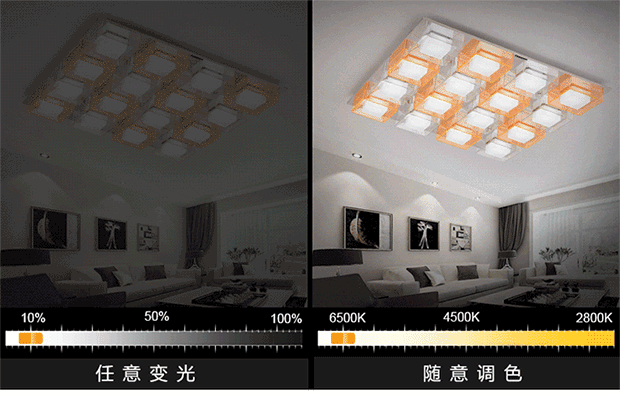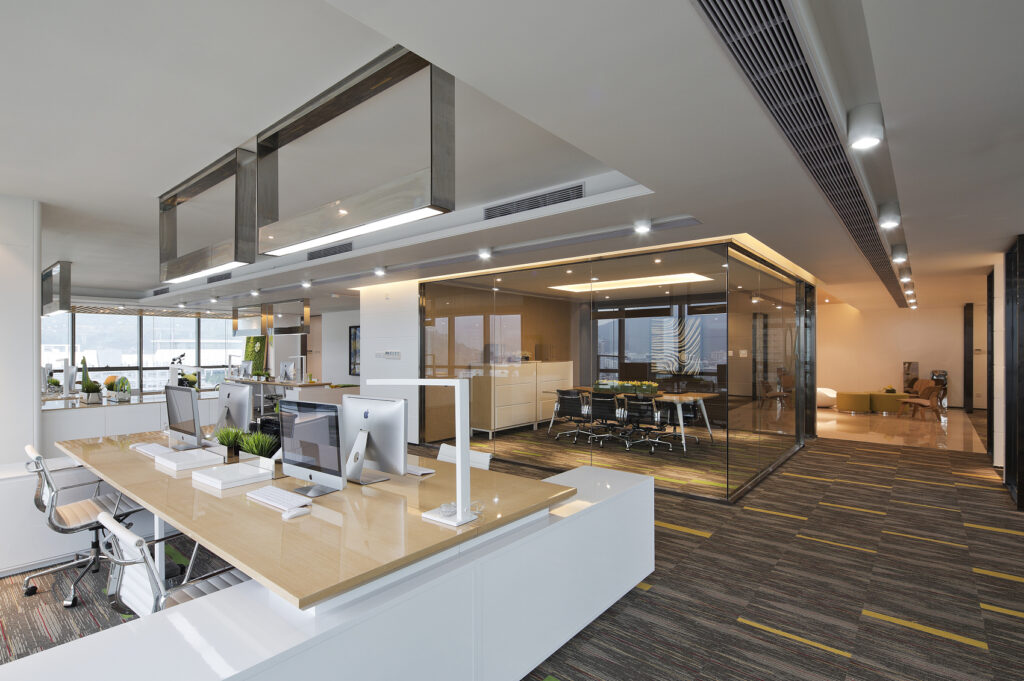
Do you ever get tired of the glaring lights in your office, wishing you could adjust their brightness according to your mood or the task at hand? Or perhaps you're an individual who loves to have control over every detail of your environment, including the level and color of your lighting. If so, you should definitely familiarize yourself with the concept of DALI dimming. This powerful technology has the potential to revolutionize how you perceive and manipulate lighting in your surroundings, ensuring you always have the ideal setting.

What is DALI Dimming?
Digital Addressable Lighting Interface, more commonly known as DALI, is a protocol specifically designed for the digital control of lighting systems in buildings. At its core, the goal of DALI is to facilitate the creation of individually tailored lighting environments in an easy and efficient manner. It allows for smooth, seamless, and individualized control of each light within a system, offering users the ability to manipulate their lighting scenario to their exact specifications.

When we talk about DALI dimming, we're referring to the method through which this protocol adjusts the brightness levels of lights within a building. Rather than being limited to binary options of 'on' or 'off,' DALI dimming empowers users with the ability to control the brightness of their lights on a sliding scale, allowing for a fine-tuned lighting environment that perfectly suits the user's needs.

Imagine, for example, that you're in an office late in the evening. The harsh overhead lights that are ideal for a bustling, busy workspace in the middle of the day now feel far too bright and unpleasant. With DALI dimming, you can simply adjust the brightness of your lights, bringing them down to a level that feels comfortable and suitable for the quiet atmosphere of the late evening office.
The History of DALI Dimming
The DALI protocol was first introduced in the late 1990s, emerging as an innovation in the realm of standardized digital lighting control. The technology was developed by several leading companies in the lighting industry, including Philips, Osram, and Tridonic, who sought to create a universal standard for digital lighting control that could be adopted industry-wide.
The introduction of DALI marked a significant step forward in the lighting industry, providing a level of flexibility and precision control that was unprecedented in existing lighting control systems. This technology brought lighting control into the digital age, enabling systems to leverage digital communication protocols to achieve a degree of control that simply wasn't possible with analog systems.

*1 LEED (Leadership in Energy and Environmental Design): Environmental performance evaluation system for buildings and site use
*2 ZEB (Zero-Energy Building): A building that aims to achieve a comfortable indoor environment while reducing the annual primary energy consumption of the building to zero.
*3 WELL: A system to evaluate the environmental and energy performance of a building and the health and comfort of its users
*4 UL Standard: Product safety standard established by Underwriters Laboratories Inc.
*5 ISO standard: International standard for a product or service that states the same level of quality should be provided all over the world.
*6 IEC standard: International standard for electrical and electronic technologies.
Today, DALI dimming is seen as a gold standard in digital lighting control, used in a wide variety of settings to enable precise, customizable control of lighting systems.
Wie funktioniert das DALI-Dimmen?

The functionality of DALI dimming lies in the intricate architecture of a DALI system. In such a system, each light or group of lights is assigned a unique digital address. This address serves as an identifier, allowing the system to direct commands to specific lights or groups of lights. So, when you use a DALI system to dim a particular light, the system sends a digital command to the address assigned to that light, instructing it to adjust its brightness to a specified level.
This functionality is what gives DALI systems their remarkable versatility. Each individual light within a system can be controlled independently, or lights can be grouped together and controlled as a unit. This allows users to adjust the lighting in a space on a grand scale (such as dimming all lights in a room simultaneously), or on a much more precise level (such as dimming a single desk lamp in an office full of lights).
The control possibilities are further enhanced by the fact that each DALI system supports up to 64 individual addresses. This means that a single system can manage a significant number of lights, making DALI a scalable solution that can work in a variety of settings, from small residential spaces to large commercial buildings.

But DALI dimming isn't just about the raw ability to control light levels. It's also about the quality of the control that it provides. DALI dimming allows for smooth, gradual changes in brightness, rather than abrupt shifts. This makes changes in lighting feel natural and comfortable to the eye, preventing any unpleasant surprises or distractions that could come from sudden changes in light intensity.

Real-World Applications of DALI Dimming
DALI dimming technology finds applications in various real-world scenarios due to its versatile features and capabilities. Here are a few:
1. Office Spaces
In an office environment, the ability to control lighting to suit varying work requirements is crucial. With DALI dimming, companies can create different light settings for meetings, brainstorming sessions, or individual work. It helps improve employee productivity and comfort, and it can also contribute to energy savings.
2. Residential Properties
DALI dimming is increasingly being used in residential settings. With DALI, homeowners can create various moods within their homes, adjusting the lighting to match the time of day, activities, or even the seasons. For instance, they could have brighter lights for reading and softer lighting for relaxation.


3. Retail Stores
Retail stores can utilize DALI dimming to highlight certain products or areas within the store, helping to guide customers and enhance the overall shopping experience. It can also be used to create a comfortable environment for shoppers, encouraging them to stay longer.
4. Art Galleries and Museums
Lighting is an essential element in art galleries and museums as it can dramatically impact the way viewers perceive artwork. DALI dimming allows these establishments to fine-tune the lighting for each piece of art, ensuring that each work is displayed in the most flattering light.
As you can see, DALI dimming is not limited to a single type of application or environment. Its adaptability and versatility make it suitable for a wide range of settings, adding value by enabling precise, customizable control of lighting.


Benefits of DALI Dimming
There are several significant benefits to using DALI dimming in your lighting systems:
1. Precision Control
With DALI dimming, you get the ability to adjust your lighting to your exact specifications. Each light can be controlled individually, or grouped and managed as a collective unit. This precision control can make a big difference in creating the right atmosphere and mood, whether it's for work, leisure, or anything in between.
2. Energy Savings
DALI systems can contribute to energy savings in two ways. First, by allowing you to adjust the brightness of your lights, you can ensure that you're using only as much light as you need. Second, DALI systems can be programmed to automatically adjust light levels based on the time of day or the amount of available natural light, further enhancing energy efficiency.
3. Enhanced Comfort
The ability to adjust the lighting to suit your needs can significantly enhance comfort. Whether you're trying to create a relaxing atmosphere for an evening at home or trying to maintain productivity in an office setting, the ability to control your lighting can make a big difference in how comfortable you feel in a space.
4. Scalability
DALI systems are highly scalable, capable of supporting up to 64 individual lights. This makes them suitable for a wide range of applications, from small homes to large commercial buildings.
Together, these benefits make DALI dimming a compelling option for anyone looking to improve their control over their lighting systems.

Limitations of DALI Dimming
While DALI dimming offers numerous benefits, there are a few limitations to consider:
1. Complexity
While DALI systems offer a lot of flexibility and control, they can also be somewhat complex to set up and manage, especially for larger systems. This may require professional installation and ongoing management, which could add to the overall cost of the system.
2. Cost
DALI systems can be more expensive than other lighting control solutions due to their advanced features and capabilities. However, it's important to consider the long-term benefits and potential energy savings when assessing the cost.
3. Compatibility
Not all lights are compatible with DALI systems. Before investing in a DALI system, you'll need to ensure that your lights can communicate with the DALI protocol, which may require additional hardware or the purchase of new, DALI-compatible lights.
Despite these limitations, many find that the benefits of DALI dimming far outweigh any potential drawbacks. The level of control and customization that DALI provides is hard to match with other systems, making it an attractive option for many applications.
Schlussfolgerung
To conclude, DALI dimming is a versatile and flexible technology that can dramatically improve how you control and experience lighting in your environment. While there may be a few hurdles to overcome initially, the benefits it provides - from enhanced comfort to energy savings - are well worth considering. Whether you're managing a large commercial building or simply looking for ways to improve your home's lighting, DALI dimming is an option worth exploring.
FAQ
What types of lights can DALI control?
DALI can control various types of lights, including LEDs, fluorescent lights, and halogen lights, provided that they're compatible with DALI systems.
Can DALI systems be integrated with other building management systems?
Yes, DALI can be integrated with other building management systems, making it an excellent choice for smart homes or intelligent office spaces.
Can I install a DALI system myself?
While it's possible to install a DALI system yourself, it's recommended to hire a professional due to the complexity of the system.
Do I need to replace all my lights to use DALI?
You'll need DALI-compatible lights to use with a DALI system. Depending on your current lights, you may need to replace them or find a DALI-compatible driver to use with your existing lights.
Does DALI dimming save energy?
Yes, by allowing the dimming of lights when full intensity isn't needed, DALI dimming can contribute to significant energy savings.






